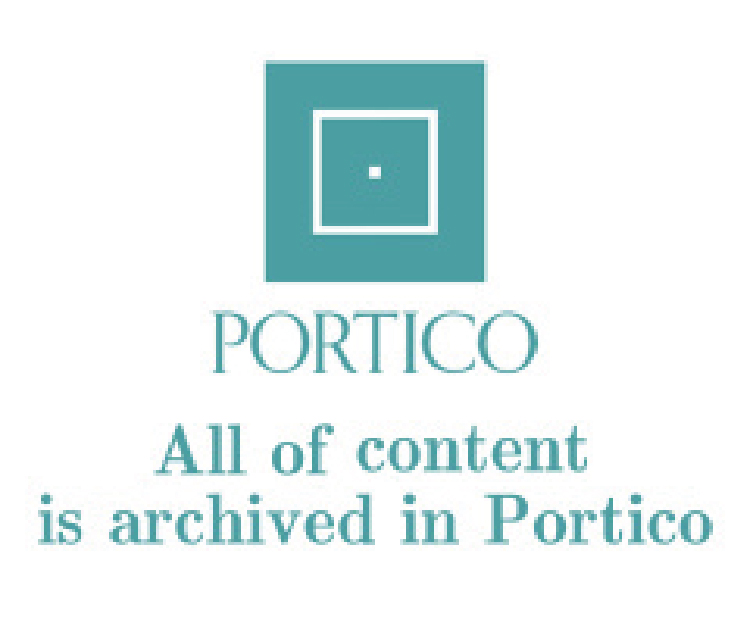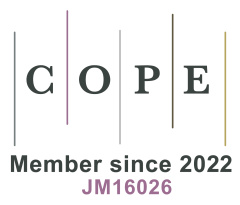The biomechanical study on the preparation and upconversion luminescence properties and antibacterial performance of Pr3+-doped Y2SiO5 based on bivalent ionic Yb3+-Li+
Abstract
This study focuses on the extended applications of Pr3+-doped yttrium oxide single crystals. By introducing Yb2O3, Yb/Pr co-doped Y2SiO5 single crystals and dual-ion Yb3+-Li+ doped Pr3+: Y2SiO5 materials were successfully prepared. Beyond their systematically investigated optical properties, their mechanical properties relevant to biomechanics were also examined. The experiment revealed that Yb3+@Pr3+: Y2SiO5 doped with 0.1 mol% Yb₂O₃ exhibited the highest fluorescence emission (approximately 250,000 cps), with the synergistic effect of Yb3⁺-Li⁺ significantly increasing upconversion efficiency. Under 980 nm far-infrared excitation, the quantum efficiency reached 74.9%, significantly surpassing that of single-ion doping systems. Moreover, under 415 nm visible light excitation, Yb3+@Pr3+: Y2SiO5 exhibited excellent light conversion efficiency (7.52%), highlighting its potential as a light conversion material. The combination of these optical properties with favorable mechanical characteristics underscores its promise as a multifunctional material for biomechanical applications. Dual-ion Li-Yb@Pr3+: Y2SiO5 under 980 nm infrared light irradiation, showed a significantly improved antibacterial effect compared to the control group under dark conditions. The results indicate that this material can better withstand mechanical stress exerted by biological tissues, highlighting its potential for applications in both antibacterial and biomechanical fields. This study not only improves the understanding of the optical and mechanical properties of rare-earth-doped materials in the context of biomechanics but also offers a scientific basis and experimental foundation for their use in implant design. By considering both optical and mechanical properties, as well as biological tissue-material interactions from a mechanical perspective, this work paves the way for advanced materials in biomedical applications.
References
1. Su P, Song F, Cao J, et al. Rare Earth Complex-Based Functional Materials: From Molecular Design and Performance Regulation to Unique Applications. Accounts of Chemical Research. 2025; 58(2): 218-230. doi: 10.1021/acs.accounts.4c00649
2. Li Z, Zheng L, Zhang L, et al. Synthesis, characterization and upconversion emission properties of the nanocrystals of Yb3+/Er3+-codoped YF3–YOF–Y2O3 system. Journal of Luminescence. 2007; 126(2): 481-486. doi: 10.1016/j.jlumin.2006.09.002
3. Yin D, Song K, Ou Y, et al. Synthesis of NaYF4, NaLuF4 and NaGdF4-Based Upconversion Nanocrystals with Hydro (Solvo) Thermal Methods. Journal of Nanoscience and Nanotechnology. 2013; 13(6): 4162-4167. doi: 10.1166/jnn.2013.7214
4. Noh HM, Yang HK, Moon BK, et al. Concentration Enhanced Upconversion Luminescence in ZrO2: Ho3+, Yb3+ Nanophosphors. Journal of Nanoscience and Nanotechnology. 2013; 13(6): 4006-4009. doi: 10.1166/jnn.2013.6998
5. Zhou W. Multispectral luminescence of core-shell rare-earth NaLuF4: Yb,Er@NaLuF4: Yb,Tm@NaLuF4 upconversion nanomaterials for ratiometric optical temperature sensing. Journal of Luminescence. 2025; 278: 120999. doi: 10.1016/j.jlumin.2024.120999
6. Mhlongo GH, Ntwaeaborwa OM, Dhlamini MS, et al. Effects of Ce3+ concentration, beam voltage and current on the cathodoluminescence intensity of SiO2: Pr3+–Ce3+ nanophosphor. Journal of Alloys and Compounds. 2011; 509(6): 2986-2992. doi: 10.1016/j.jallcom.2010.11.179
7. Tan K, Zhang H, Xie C, et al. Visible-light absorption and photocatalytic activity in molybdenum- and nitrogen-codoped TiO2. Catalysis Communications. 2010; 11(5): 331-335. doi: 10.1016/j.catcom.2009.10.025
8. Malyukin YV, Masalov AA, Zhmurin PN, et al. Two mechanisms of1D2 fluorescence quenching of Pr3+-doped Y2SiO5 crystal. Physica Status Solidi (B). 2003; 240(3): 655-662.
9. Novoselov A, Ogino H, Yoshikawa A, et al. Crystal growth, optical and luminescence properties of Pr-doped Y2SiO5 single crystals. Optical Materials. 2007; 29(11): 1381-1384. doi: 10.1016/j.optmat.2006.04.017
10. Sun CL, Li JF, Hu CH, et al. Ultraviolet upconversion in Pr3+: Y2SiO5 crystal by Ar+ laser (488 nm) excitation. The European Physical Journal D. 2006; 39(2): 303-306. doi: 10.1140/epjd/e2006-00102-7
11. Chen J, Zhao JX. Upconversion Nanomaterials: Synthesis, Mechanism, and Applications in Sensing. Sensors. 2012; 12(3): 2414-2435. doi: 10.3390/s120302414
12. Feldmann C, Jüstel T, Ronda CR, et al. Inorganic Luminescent Materials: 100 Years of Research and Application. Advanced Functional Materials. 2003; 13(7): 511-516. doi: 10.1002/adfm.200301005
13. Cates EL, Cho M, Kim JH. Converting Visible Light into UVC: Microbial Inactivation by Pr3+-Activated Upconversion Materials. Environmental Science & Technology. 2011; 45(8): 3680-3686. doi: 10.1021/es200196c
14. Zhang Y, Deng Y, Zhai Y, et al. Author Correction: A bispecific nanosystem activates endogenous natural killer cells in the bone marrow for haematologic malignancies therapy. Nature Nanotechnology. 2024; 19(10): 1580-1580. doi: 10.1038/s41565-024-01796-x
15. Cheng Q, Li T, Tian Y, et al. NIR-II Fluorescence Imaging-Guided Photothermal Therapy with Amphiphilic Polypeptide Nanoparticles Encapsulating Organic NIR-II Dye. ACS Applied Bio Materials. 2020; 3(12): 8953-8961. doi: 10.1021/acsabm.0c01218
16. Hu C, Guo T, Li H, et al. A novel NIR-II probe for improved tumor-targeting NIR-II imaging. RSC Advances. 2021; 11(62): 39287-39290. doi: 10.1039/d1ra07135a
17. Luo R, Zhang C, Zhang Z, et al. NIR-II upconversion nanomaterials for biomedical applications. Nanoscale. 2025; 6.
18. Liu X, Wang C, Ma H, et al. Water‐Responsive Hybrid Nanoparticles Codelivering ICG and DOX Effectively Treat Breast Cancer via Hyperthermia‐aided DOX Functionality and Drug Penetration. Advanced Healthcare Materials. 2019; 8(8). doi: 10.1002/adhm.201801486
19. Zheng M, Zhao P, Luo Z, et al. Remote and noninvasive NIR-triggered DOX release from DOX/ICG-loaded temperature-responsive nanoparticles to promote anti-tumor effect. Nanomedicine: Nanotechnology, Biology and Medicine. 2016; 12(2): 547. doi: 10.1016/j.nano.2015.12.282
20. Vasudevan Sajini D, Thaggikuppe Krishnamurthy P, Chakkittukandiyil A, et al. Orientin Modulates Nrf2-ARE, PI3K/Akt, JNK-ERK1/2, and TLR4/NF-kB Pathways to Produce Neuroprotective Benefits in Parkinson’s Disease. Neurochemical Research. 2024; 49(6): 1577-1587. doi: 10.1007/s11064-024-04099-8
21. Wang Y, Huang K, Wang T, et al. Nanosensors Monitor Intracellular GSH Depletion: GSH Triggers Cu(II) for Tumor Imaging and Inhibition. Small. 2024; 20(27). doi: 10.1002/smll.202310300
22. Lim SF, Riehn R, Ryu WS, et al. In vivo and scanning electron microscopy imaging of up-converting nanophosphors in Caenorhabditis elegans. Nano Letters. 2006; 6(2).
23. Xiong L, Chen Z, Tian Q, et al. High Contrast Upconversion Luminescence Targeted Imaging in Vivo Using Peptide-Labeled Nanophosphors. Analytical Chemistry. 2009; 81(21): 8687-8694. doi: 10.1021/ac901960d
24. ACS. Corrections to Publications in J. Phys. Chem. Lett. Volume 2, Issue 1. The Journal of Physical Chemistry Letters. 2010; 2(1): 47-47. doi: 10.1021/jz101684t
25. Ding D, Gao J, Zhang S, et al. The photoluminescence properties of Pr3+-Yb3+ co-doped gallo-germanate glasses and glass ceramics as energy converter. Journal of Luminescence. 2020; 226: 117512. doi: 10.1016/j.jlumin.2020.117512
26. Ci Yunxiang, Lan Zhanghua. Fluorometric determination of samarium and gadolinium by enhancement of fluorescence of samarium-thenoyltrifluoroacetone-1,10-phenanthroline ternary complex by gadolinium. Analytical Chemistry. 1989; 61(10): 1063-1069. doi: 10.1021/ac00185a004
27. Zhu B, Ruan K, Tatiana C, et al. Reversible Multi-Mode Optical Modification in Inverse-Opal-Structured WO3: Yb3+, Er3+ Photonic Crystal. Materials. 2024; 17(10): 2436. doi: 10.3390/ma17102436
28. Wang D, Wu W, Tan X, et al. Upconversion Visible Light Emission in Yb/Pr Co-Doped Yttria-Stabilized Zirconia (YSZ) Single Crystals. Crystals. 2021; 11(11): 1328. doi: 10.3390/cryst11111328
29. Researchers from Kyung Hee University. Doping Concentration-independent Optical Thermometric Properties In Stark Sublevels-based Er3+ -activated Bagd2o4 Luminescent. Science Letter; 2019.
30. Fernández A, Araujo FP, Guerra Y, et al. Synthesis of coral-like structures of Pr–Yb co-doped YIG: Structural, optical, magnetic and antimicrobial properties. Journal of Rare Earths. 2023.
31. Liu J, Wang Y, Yu X, et al. Enhanced photoluminescence properties of Zn2SiO4: Mn2+ co-activated with Y3+/Li+ under VUV excitation. Journal of Luminescence. 2010; 130(11): 2171-2174. doi: 10.1016/j.jlumin.2010.06.014
32. Santos C, Ribeiro S, Strecker K, et al. Crystallographic characterization of silicon nitride ceramics sintered with Y2O3–Al2O3 or E2O3–Al2O3 additions. Ceramics International. 2009; 35(1): 289-293. doi: 10.1016/j.ceramint.2007.10.014
33. Zhou W, Yang J, Wang J, et al. Study on the effects of 5d energy locations of Ce^3+ ions on NIR quantum cutting process in Y_2SiO_5: Ce^3+, Yb^3+. Optics Express. 2012; 20(S4): A510. doi: 10.1364/oe.20.00a510
34. Bagade KS, Kumbhar AS. APTES immobilized copper-doped nitrogen quantum dots (CuNPs@N-GQDs@APTES): An efficient heterogeneous nanocatalyst for multicomponent synthesis of 5-substituted-1H-tetrazoles. Journal of Organometallic Chemistry. 2025; 1030: 123565. doi: 10.1016/j.jorganchem.2025.123565
35. Rokicka-Konieczna P, Wanag A, Sienkiewicz A, et al. Antibacterial effect of TiO2 nanoparticles modified with APTES. Catalysis Communications. 2020; 134: 105862. doi: 10.1016/j.catcom.2019.105862
36. Abdi S, Dorranian D. Effect of CTAB concentration on the properties of ZnO nanoparticles produced by laser ablation method in CTAB solution. Optics & Laser Technology. 2018; 108: 372-377. doi: 10.1016/j.optlastec.2018.07.009
37. He J, Unser S, Bruzas I, et al. The facile removal of CTAB from the surface of gold nanorods. Colloids and Surfaces B: Biointerfaces. 2018; 163: 140-145. doi: 10.1016/j.colsurfb.2017.12.019
38. Ye W, Krüger K, Sánchez-Iglesias A, et al. CTAB Stabilizes Silver on Gold Nanorods. Chemistry of Materials. 2020; 32(4): 1650-1656. doi: 10.1021/acs.chemmater.9b05139
39. Hazarika D, Saikia D, Gupta K, et al. Photoluminescence, Self cleaning and Photocatalytic Behavior of Waterborne Hyperbranched Polyester/Carbon dot@TiO2 Nanocomposite. ChemistrySelect. 2018; 3(22): 6126-6135. doi: 10.1002/slct.201801160
40. Ban S, Lee H, Chen J, et al. Recent advances in implantable sensors and electronics using printable materials for advanced healthcare. Biosensors and Bioelectronics. 2024; 257: 116302. doi: 10.1016/j.bios.2024.116302
41. Nandanapalli KR, Mudusu D, Lingandhinne RMR, et al. Retracted: Corrigendum to “Passivation layer-dependent catalysis of zinc oxide nanostructures” [Mater. Today Chem. 22 (2021) 100592]. Materials Today Chemistry. 2024; 36: 101955. doi: 10.1016/j.mtchem.2024.101955
42. Lomovskaya O, Tsivkovski R, Nelson K, et al. Spectrum of Beta-Lactamase Inhibition by the Cyclic Boronate QPX7728, an Ultrabroad-Spectrum Beta-Lactamase Inhibitor of Serine and Metallo-Beta-Lactamases: Enhancement of Activity of Multiple Antibiotics against Isogenic Strains Expressing Single Beta-Lactamases. Antimicrobial Agents and Chemotherapy. 2020; 64(6). doi: 10.1128/aac.00212-20
43. Zdarska V, Kolar M, Mlynarcik P. Occurrence of Beta-Lactamases in Bacteria. Infection, Genetics and Evolution. 2024; 122: 105610. doi: 10.1016/j.meegid.2024.105610
44. Chen L, Ai J, Cai H, et al. Antibacterial gauze based on the synergistic antibacterial mechanism of antimicrobial peptides and silver nanoparticles. Journal of Polymer Research. 2021; 28(2). doi: 10.1007/s10965-020-02363-3
45. He C, Feng P, Hao M, et al. Nanomaterials in Antibacterial Photodynamic Therapy and Antibacterial Sonodynamic Therapy. Advanced Functional Materials. 2024; 34(38). doi: 10.1002/adfm.202402588
46. Bodega G, Alique M, Puebla L, et al. Microvesicles: ROS scavengers and ROS producers. Journal of Extracellular Vesicles. 2019; 8(1). doi: 10.1080/20013078.2019.1626654
Copyright (c) 2025 Author(s)

This work is licensed under a Creative Commons Attribution 4.0 International License.
Copyright on all articles published in this journal is retained by the author(s), while the author(s) grant the publisher as the original publisher to publish the article.
Articles published in this journal are licensed under a Creative Commons Attribution 4.0 International, which means they can be shared, adapted and distributed provided that the original published version is cited.



 Submit a Paper
Submit a Paper
